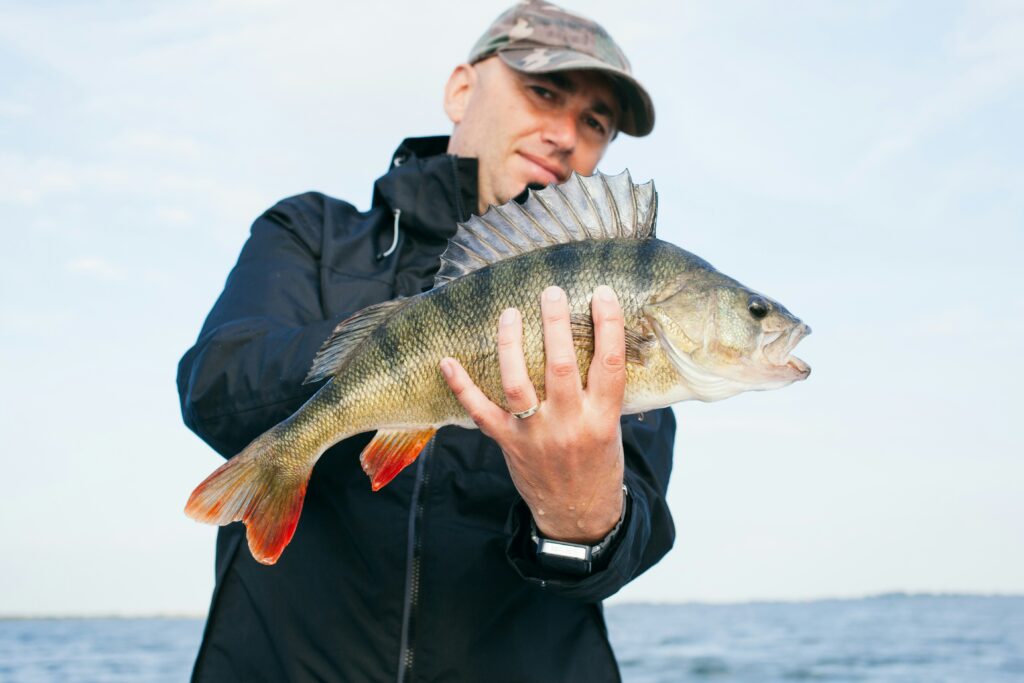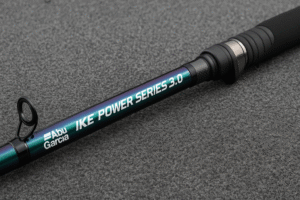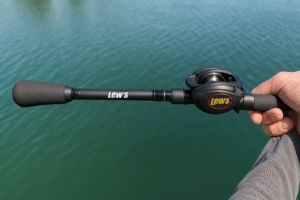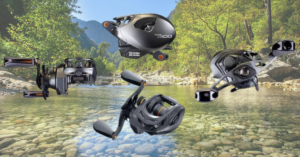Why a Heavy Spinnerbait Works Shallow & How to Fish It Right

Let me tell you something from experience—fishing shallow water with spinnerbaits might sound simple, but getting it just right takes a little more than tossing a lure and hoping for the best.
Most folks think light spinnerbaits are the go-to in skinny water, but here’s the kicker: a heavy spinnerbait can be your secret weapon when the conditions get rough, especially in muddy, cold, or early spring waters. Sounds backwards? Trust me, it’s not. Let’s break down why the heavy setup works and how to fish it properly.
Why Use a Spinnerbait in Shallow Water?

When the water gets dirty and visibility drops to less than a foot, bass move closer to the surface and tighter to cover.
They’re on the hunt but can’t see much, so they rely on their lateral lines to feel vibrations in the water. That’s where spinnerbaits come in.
The big blades on a spinnerbait thump through the water, sending out strong vibrations. It’s like ringing a dinner bell for bass.
And when they’re sitting in 1–5 feet of water next to brush, docks, or stumps, a loud, vibrating bait is often what draws them out.
But what’s surprising to many is that heavier spinnerbaits actually perform better in these shallow, dirty waters—if you know how to use them.
Why a Heavier Spinnerbait Works Better
So why go heavy when fishing shallow? Shouldn’t a lighter bait be better near the surface?
Well, here’s the truth: heavy spinnerbaits allow for more control and stability, especially when you’re using oversized blades that push a lot of water. With a big Colorado blade, for example, a 3/8 or 1/2-ounce head often causes the bait to roll or wobble to the side.
Not only does this reduce your chances of getting bit, but it also increases your odds of snagging.
Using a 3/4-ounce or even a full 1-ounce spinnerbait gives you enough weight to keep the bait upright and stable, even with a large No. 6 Colorado blade. You can retrieve it faster without worrying about it turning sideways or snagging in the cover.
Here’s what happens with a lighter head: you start reeling faster, and suddenly the bait rolls on its side. That sideways movement ruins the thump pattern and makes it harder for bass to hone in—plus, it gets caught in brush or grass way more easily.
A heavier bait fixes all of that. You get:
Better tracking
Less rolling
More thump
Fewer snags
How Shallow Can You Fish a Heavy Spinnerbait?
You’d be surprised—you can fish a 1-ounce spinnerbait right up to the bank. But here’s the trick: you don’t want it dragging the bottom. The goal is to fish it about midway through the water column—just a few feet under the surface, and a couple of feet off the bottom.
When fishing in 1 to 5 feet of water, you want to “split the difference.” This allows bass both above and below to see and feel the bait. And when the water is extra cold or the bite is slow, you may need to make multiple casts to the same target.
Sometimes, a bass won’t hit it on the first try. But by the third, fourth, or even fifth cast, that fish might finally commit. It’s about persistence and presenting that loud, thumping bait until the fish can’t ignore it anymore.
Adjusting Blade Size and Head Weight
There’s no one-size-fits-all in spinnerbait fishing. Sure, a 1-ounce spinnerbait with a No. 6 Colorado blade might be your go-to in muddy, cold water, but what happens when fish short strike or water clarity changes?
That’s when it pays to tweak your setup.
If fish start missing the bait or just nipping at the trailer:
Drop to a 3/4-ounce head with a size 5 blade.
This setup forces you to slow down your retrieve and gives fish a better chance to commit.
And if the water starts clearing up a bit?
- The aggressive thump of a No. 6 blade might be too much.
- That’s your cue to scale it back to a smaller blade or a more subtle skirt color.
Being able to adjust quickly is key. If you get too locked in on one combo, you might miss the best bite window of the day.
What Colors Work Best?
Color in muddy water is always up for debate. Some anglers swear by it, others say it’s all about vibration. But when you can give bass both vibration and visibility, you increase your odds.
The go-to shallow water color combo?
Chartreuse and blue skirt
Red
White swimbait trailer (optional)
That red head might seem odd, but it gives bass something to key in on, even in low visibility. And even if they can’t see it well, that bright flash helps them track it just enough to get a solid strike.
Frink—an expert mentioned in the reference—often uses this red-headed combo and swears it makes a difference in those early spring mud flats.
Don’t be afraid to experiment with different weights, blade sizes, and colors. And don’t give up if you don’t get it right away—this is a multiple-cast technique, especially in colder months.
So next time you’re working stained water or post-front shallows, grab a heavy spinnerbait and give it a shot. You might just hook your new personal best.





